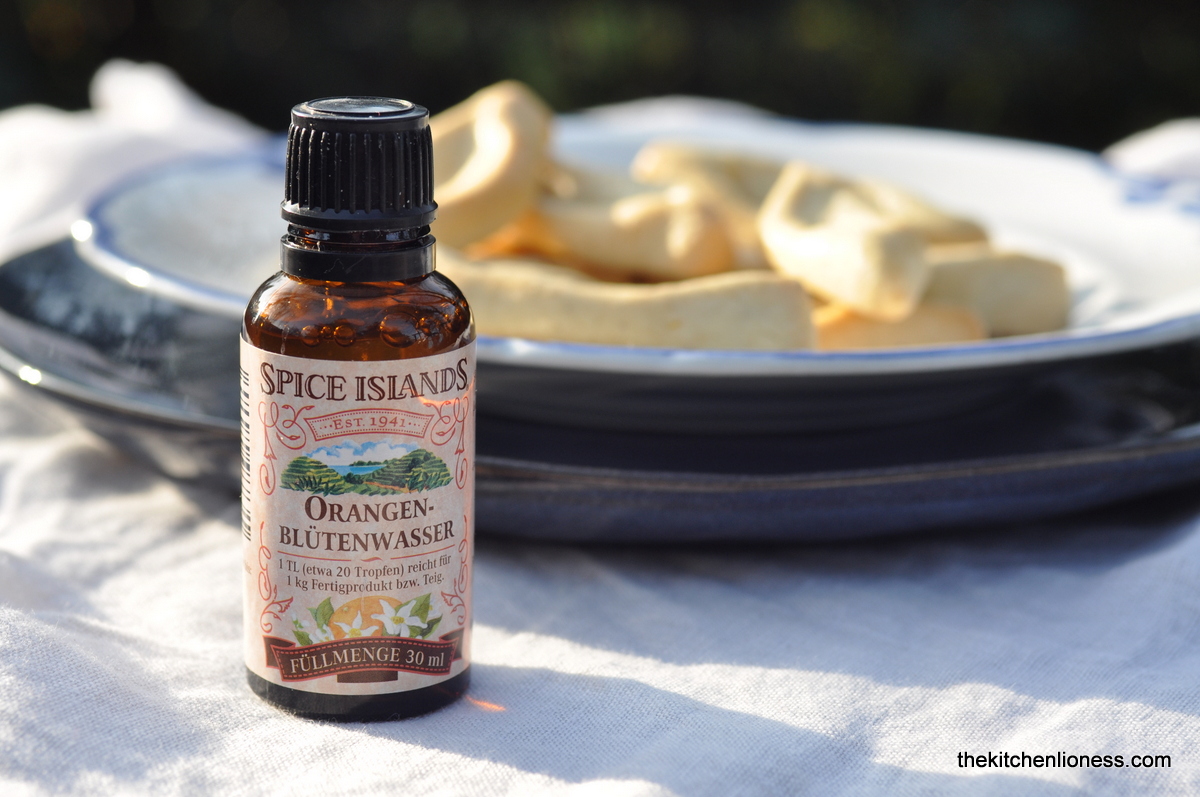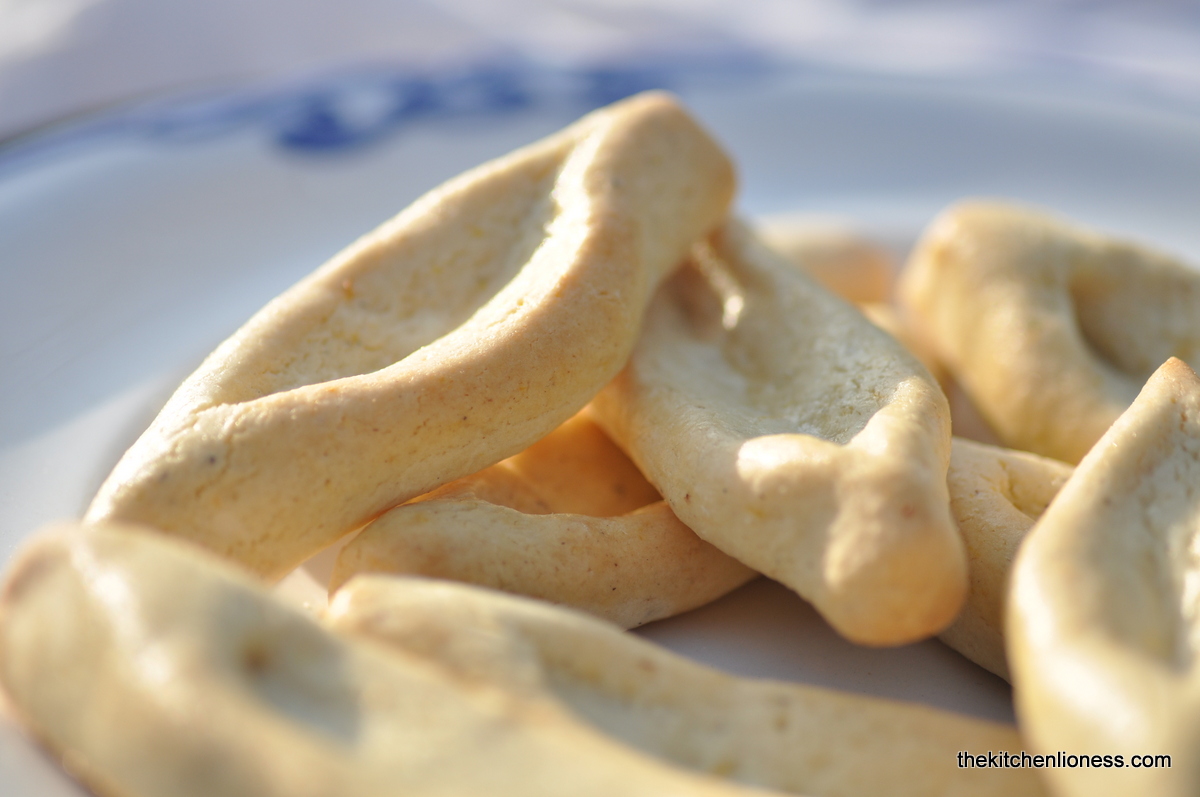Today, to start off the local Canival season, I am featuring a recipe for wonderful Carnival Doughnuts. These doughnuts are considered to be a traditional pastry, fried in hot oil until deep golden-colored and served with a cinnamon-sugar coating.
|
Zum Auftakt der Karnevalssaison, gibt es ein Rezept für wunderbare Karnevals-Krapfen. Krapfen sind ein traditionelles und sehr beliebtes Gebäck, dass in heißem Fett goldgelb ausgebacken wird und mit Zimt-Zucker bestreut serviert wird. |
Carnival goes by many names in German, depending on the region and dialect. Whether you call it Fastnacht, Fasching or Karneval, it is a time for revelry, humor, and satire. The actual celebrations of the German Carnival take place 40 days before Easter, it is like a last week-long party before Ash Wednesday and the beginning of Lent.
|
Karneval hat viele Namen in Deutsch, je nach Region und Dialekt. Ob man die närrischen Tage Fastnacht, Fasching oder Karneval nennt, es ist in jedem Fall eine Zeit zum Feiern, des Humors und der Satire. Die eigentlichen Feierlichkeiten des deutschen Karnevals beginnen immer 40 Tage vor Ostern, es ist wie eine letzte lange Party vor Aschermittwoch und somit dem Beginn der Fastenzeit. |
On Thursday, the Carnival celebrations kick off with Women’s Carnival Day at exactly 11.11 a.m. The next highlight is today on so-called Rose Monday. Marching bands, dancers, and floats parade down city streets. The participants of the parades throw confetti, sweets, little bundles of flowers and toys to the eager costumed crowds lining the streets where the parades take place. The elaborate floats often show caricatured figures mocking politicians and other personalities and thousands of dressed-up Germans are flocking the streets every year to watch them.
|
An Weiberfastnacht um 11:11 Uhr gehen die Feierlichkeiten offiziell los. An Rosenmontag gibt es unzählige traditionelle Karnevalszüge in vielen deutschen Städten. Die Züge bestehen aus Abordnungen der Karnevalsvereine mit Prunkwagen, Kapellen, Tanzgruppierungen und oft auch aus so genannten Motivwagen. Letztere stellen oft Ereignisse und Personen des vergangenen Jahres in satirisch interpretierter Form dar. Von den Prunkwagen und den teilnehmenden Gruppen des Umzugs werden Kamelle (also Bonbons und andere Süßigkeiten) und Strüßcher (Blumen) unter die Zuschauer geworfen. |
Almost every German city celebrates Carnival and organizes a street parade in its city center. The best and most traditional Carnival festivities take place in the Cities of Düsseldorf, Münster, Aachen, Mainz, and, of course my beloved hometown, Cologne.
| Fast jede deutsche Stadt feiert Karneval und organisiert einen Karnevalsumzug in der Innenstadt. Im Rheinland finden die meist besuchtne und traditionsreichsten Karnevals-Feierlichkeiten in den Städten Düsseldorf, Münster, Aachen, Mainz und natürlich in meiner geliebten Heimatstadt Köln, statt. |
On Shrove Tuesday, costume balls are held all over Germany, while the quiet Ash Wednesday marks the end of the frenzied fun.
As with every longstanding traditional holiday, special sweet treats are also served during the Carnival, or "fifth season" season, as we call it. They are different depending on the region where they hail from.
|
An Veilchendienstag finden viele Kostümbälle statt und am Aschermittwoch beginnt die 40-tägige Fastenzeit und somit steht dieser Tag für das Ende der Karnevalssaison. Passend zur so genannten fünften Jahreszeit gibt es natürlich jede Menge regional verschiedene, süße Karnevalsrezepte. |
Pastries that are particular to Carnival include the very popular Fried Almond Cookies (my recipe can be found here).
Today, I am presenting a recipe for Carnival Doughnuts. I baked them with a special flour, called Doughnut Flour. This is a specialty flour but the recipe also works well with strong baking flour. | Zum traditionellen Karnevalsgebäck gehören zum Beispiel die allseits beliebten Mutzemandeln, mein Rezept findet ihr hier. Heute gibt es dann Krapfen – ich habe ich sie mit einem besonderen Mehl gebacken, einem Krapfenmehl. Aber man kann dieses Rezept auch mit Weizenmehl Type 550 backen. |
Carnival Doughnuts
Ingredients
In addition
Preparation of the Doughnuts
|
Karnevals-Krapfen Zutaten
|
Traditionally, doughnuts can be prepared with either yeast or fresh cheese (Quark) as in this recipe. If you use quark in your recipe, the freshly baked doughnus will have a distinct taste of that fresh cheese, like a little tang, which we really enjoy. And they are not overly sweet either. Just right. | Man kann Krapfen ja entweder mit Hefe backen oder mit Quark, wie dieses Rezept. Wenn man frischen Magerquark für dieses Rezept nimmt, bleiben die Krapfen schön saftig und schmecken auch angenehm nach Quark. Wir fanden sie keineswegs zu süß. Mit wirklich wenig Aufwand sind diese Karnivals-Krapfen ohne Hefe schnell gemacht. |
While these Carnival Doughnuts are seasonal, they are always a true treat, so there is no reason to wait for carnival season to give them a try. And you can even coat them with powdered sugar for a change of pace.
Enjoy Carnival season while it lasts! |
Also ruhig mal ausprobieren, nicht nur zur Karnevalszeit schmecken die Quarkkrapfen ausgezeichnet. Wenn man möchte, kann man die Krapfen zur Abwechslung auch mal in Puderzucker wälzen. Viel Spaß im Karneval! |
Please note that this blog post is part of my series for a 'local' radio station, where, throughout the years, I present different baked goods that are closely tied to various holidays and seasons. If you are interested, have a LOOK & LISTEN (in German) HERE.
The various recipes of my series can be found here:
- in January, for Three Kings Day (Dreikönigstag) two kinds of Galette des Rois (Dreikönigskuchen) (HERE)
- for Lent (Fastenzeit) Lenten Soup with Lenten Beugel (Fastenbeugel) (HERE)
- for Good Friday (Karfreitag) the delicious Hot Cross Buns (HERE)
- for Pentecost /Whitsun (Pfingsten) the fun Allgäu Bread Birds (Allgäuer Brotvögel) (HERE)
- for the beginning of the summer vacation, the lovely Sacristains (Almond & Sugar Puff Pastry Sticks) (HERE)
- for St Christopher's Day (St Christophorus), the energy-packed Müsli Power Bars (Müsli Energieriegel) (HERE)
- for Mary's Assumption Day (Mariä Himmelfahrt) my Tear & Share Herb Bread (Kräuterbrot) (HERE)
- for Mary’s Birthday (Mariä Geburt) some very pretty Mary’s Sweet Rolls (Süße Marienküchlein) (HERE)
- for Thanksgiving (Erntedankfest) a delicious and seasonal Thanksgiving Apple Tart with Frangipane (Erntedank Apfeltarte mit Mandelcreme) (HERE)
- for Halloween a Pumpkin Spice Bundt Cake (Kürbis-Gewürzkuchen)
- for St Martin's Day (Martinsfest) the cheerful Sweet Dough Men (Weckmänner) (HERE)
- for St Andrew's Day (Andreastag) a classic Petticoat Tails Shortbread (HERE)
- for Christmas Day (Weihnachten) these Traditional German Gingerbread (Elisenlebkuchen) (HERE)
- for New Year's Eve a New Year's Eve Pretzel (Neujahrsbretzel)
- for Candelmas Day (Mariä Lichtmess) some delightful Navettes de Saint Victor (HERE)
- for Carnival Season (Karneval) these lovely Carnival Doughnuts (Karnevals-Krapfen) (HERE)
- for St Patrick's Day a traditional Irish Brown Soda Bread (Irisches Sodabrot)(HERE)
- for St Joseph's Day a long-forgotten but thankfully re-discovered Sweet Cotton Bread (Baumwollbrot)(HERE)
- for Palm Sunday (Palmsonntag) these very pretty Palm Pretzels (Palmbrezel) (HERE)
- for Easter Sunday (Ostersonntag) an Easter Brunch at Home with Tarte Flambée (Flammkuchen) (HERE)
- for the Month of May (Marienmonat Mai) these elegant Visitandines de Nancy (HERE)
- for Pentecost/Whitsun these festive Beignets (Heiliggeistkrapfen) (HERE) - more delicious treats to come very soon.


















